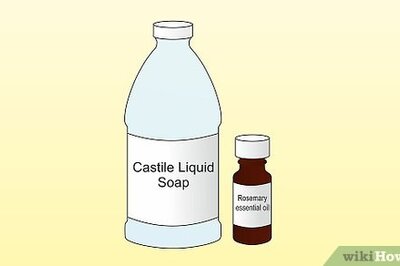
views
Example 1
Evaluate the following. The angle π 12 {\displaystyle {\frac {\pi }{12}}} {\frac {\pi }{12}} is not commonly found as an angle to memorize the sine and cosine of on the unit circle. cos π 12 {\displaystyle \cos {\frac {\pi }{12}}} \cos {\frac {\pi }{12}}
Write the expression in terms of common angles. We know the cosine and sine of common angles like π 3 {\displaystyle {\frac {\pi }{3}}} {\frac {\pi }{3}} and π 4 . {\displaystyle {\frac {\pi }{4}}.} {\frac {\pi }{4}}. It will therefore be easier to deal with such angles. cos π 12 = cos ( π 3 − π 4 ) {\displaystyle \cos {\frac {\pi }{12}}=\cos \left({\frac {\pi }{3}}-{\frac {\pi }{4}}\right)} \cos {\frac {\pi }{12}}=\cos \left({\frac {\pi }{3}}-{\frac {\pi }{4}}\right)
Use the sum/difference identity to separate the angles. cos ( π 3 − π 4 ) = cos π 3 cos π 4 + sin π 3 sin π 4 {\displaystyle \cos \left({\frac {\pi }{3}}-{\frac {\pi }{4}}\right)=\cos {\frac {\pi }{3}}\cos {\frac {\pi }{4}}+\sin {\frac {\pi }{3}}\sin {\frac {\pi }{4}}} \cos \left({\frac {\pi }{3}}-{\frac {\pi }{4}}\right)=\cos {\frac {\pi }{3}}\cos {\frac {\pi }{4}}+\sin {\frac {\pi }{3}}\sin {\frac {\pi }{4}}
Evaluate and simplify. 1 2 ⋅ 2 2 + 3 2 ⋅ 2 2 = 2 + 6 4 {\displaystyle {\frac {1}{2}}\cdot {\frac {\sqrt {2}}{2}}+{\frac {\sqrt {3}}{2}}\cdot {\frac {\sqrt {2}}{2}}={\frac {{\sqrt {2}}+{\sqrt {6}}}{4}}} {\frac {1}{2}}\cdot {\frac {{\sqrt {2}}}{2}}+{\frac {{\sqrt {3}}}{2}}\cdot {\frac {{\sqrt {2}}}{2}}={\frac {{\sqrt {2}}+{\sqrt {6}}}{4}}
Example 2
Evaluate the following. sin π 8 {\displaystyle \sin {\frac {\pi }{8}}} \sin {\frac {\pi }{8}}
Write the expression in terms of common angles. Here, we recognize that π 8 {\displaystyle {\frac {\pi }{8}}} {\frac {\pi }{8}} is half of π 4 . {\displaystyle {\frac {\pi }{4}}.} {\frac {\pi }{4}}. sin π 8 = sin ( 1 2 ⋅ π 4 ) {\displaystyle \sin {\frac {\pi }{8}}=\sin \left({\frac {1}{2}}\cdot {\frac {\pi }{4}}\right)} \sin {\frac {\pi }{8}}=\sin \left({\frac {1}{2}}\cdot {\frac {\pi }{4}}\right)
Use the half-angle identity. sin ( 1 2 ⋅ π 4 ) = ± 1 − cos π 4 2 {\displaystyle \sin \left({\frac {1}{2}}\cdot {\frac {\pi }{4}}\right)=\pm {\sqrt {\frac {1-\cos {\frac {\pi }{4}}}{2}}}} \sin \left({\frac {1}{2}}\cdot {\frac {\pi }{4}}\right)=\pm {\sqrt {{\frac {1-\cos {\frac {\pi }{4}}}{2}}}}
Evaluate and simplify. The plus-minus on the square root allows for ambiguity in terms of which quadrant the angle is in. Since π 8 {\displaystyle {\frac {\pi }{8}}} {\frac {\pi }{8}} is in the first quadrant, the sine of that angle must be positive. 1 − cos π 4 2 = 2 − 2 2 {\displaystyle {\sqrt {\frac {1-\cos {\frac {\pi }{4}}}{2}}}={\frac {\sqrt {2-{\sqrt {2}}}}{2}}} {\sqrt {{\frac {1-\cos {\frac {\pi }{4}}}{2}}}}={\frac {{\sqrt {2-{\sqrt {2}}}}}{2}}




















Comments
0 comment